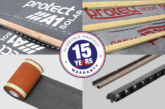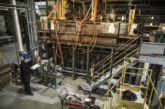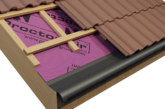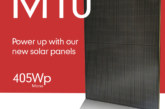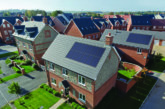Decisions about the design and specification of the building envelope play a key role in how well a building will stand the test of time — its weather-tightness, energy efficiency, visual appeal, operating costs and much more. LABM reports.
Considerations around the fixing methods for roofing and cladding systems may not be high on the agenda, but the right approach is vitally important to maximise value from capital investment and minimise both operational expenditure and the carbon footprint. This is why the team behind the new Wick Community Campus project chose their envelope systems and fasteners with great care.
In Wick, a small town in Caithness some 256 miles north of Edinburgh, a £48.5m project to replace the town’s High School, Primary School, Swimming Pool and Library with the Wick Community Campus has brought a wide range of high quality facilities to children as well as the local community.
Part of Scotland’s Schools for the Future programme and delivered by hub North Scotland, as the development partner for Highland Council, with support from Scottish Futures Trust, the council and Ryder Architecture designed building is a world away from the school it replaced. The original Wick High School dates from 1910, supplemented with several further buildings added in the 1960s, and by the 2000s it had reached a stage where it was no longer suited to the needs of modern education.
Climate protection
The new complex built by main contractor Morrison Construction has received national acclaim for its design and was shortlisted in the Royal Town Planning Institute Awards for Planning Excellence 2018. In creating an energy-efficient building that would provide flexibility in a comfortable, safe and secure internal environment with a stable climate and plenty of natural daylight, the design approach was around an ‘internal street’ with a wing arrangement where teaching accommodation is separated based on departments and their individual requirements.
The northerly coastal location of the school makes for comparatively aggressive conditions — Wick’s annual rainfall is 814mm, compared with 557mm for London, with 44.5 days per annum of air frost versus just 28.6 days in the capital. Without the right material choices for the roofing and cladding, these conditions could seriously compromise a building’s lifespan, with premature failure leading to costly repairs and unwanted disruption to the learning environment.

Roofing and cladding specialist Curtis Moore was appointed by Morrison Construction to deliver a complete envelope package. This encompassed a combination of systems specified by the architect, including 8,000m2 of Kalzip 400 standing seam roofing, which is rolled on-site from a coil of sheet metal, minimising road freight and allowing full-length sheets with no overlapping.
This was complemented by over 1,000m2 of Icopal ballasted inverted flat roofing, along with more than 1,000m2 of Rodeca translucent polycarbonate cladding, anodised aluminium cassette rainscreen cladding and Equitone fibre cement rainscreen cladding. In addition, Curtis Moore was tasked with installing perforated aluminium roof liners to provide acoustic performance and resistance to corrosion for the campus swimming pool.
Building envelope
Key to ensuring that the various building envelope solutions provide consistency in quality with lasting performance was the selection of a wide range of fastening systems from SFS throughout the construction. Amongst these were A2 (grade 304) austenitic stainless steel SDK fasteners, which are highly resistant to corrosion to secure the Kalzip standing seam roof.
In addition, stainless steel A2 (grade 304) SXC5 fasteners, which are precision engineered self-drilling screws for steel, provided an equally robust and reliable attachment for fixing C-channel sections to the steel decking, as well as for top-hat sections to C-channels. And in the roof construction for the swimming pool, where the maximum level of resistance to corrosion was needed, SFS TDB-S fasteners were selected. These were used to fix the structural decking to the main steel frame and were specified in A5 grade stainless steel (EN1.4547), a type of stainless steel, which is far less susceptible to corrosive elements such as chlorine.
These relatively small components make a big difference to the long-term success of a project by providing assurance that the building envelope will not deteriorate simply due to the failure of a fastener. It is this kind of attention to detail that is vital if the new generation of educational buildings are to stand the test of time and deliver superior quality learning facilities for years to come.


